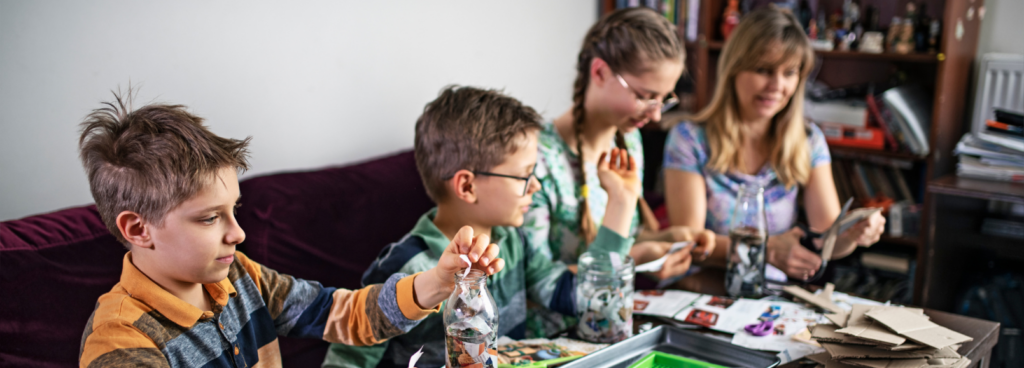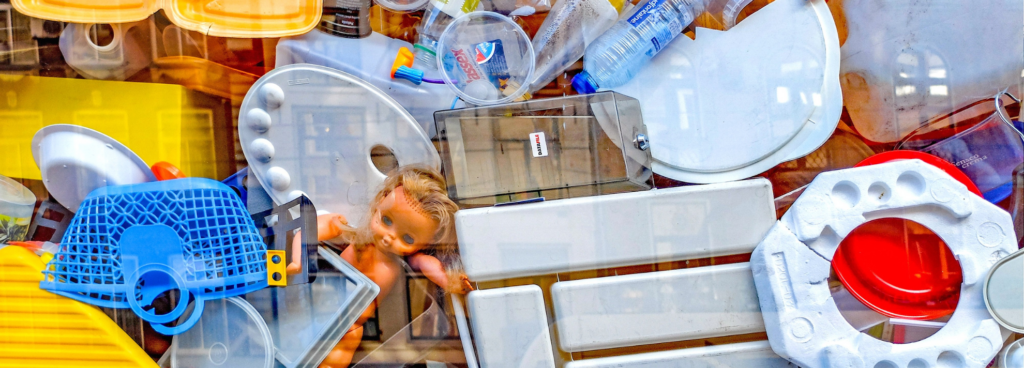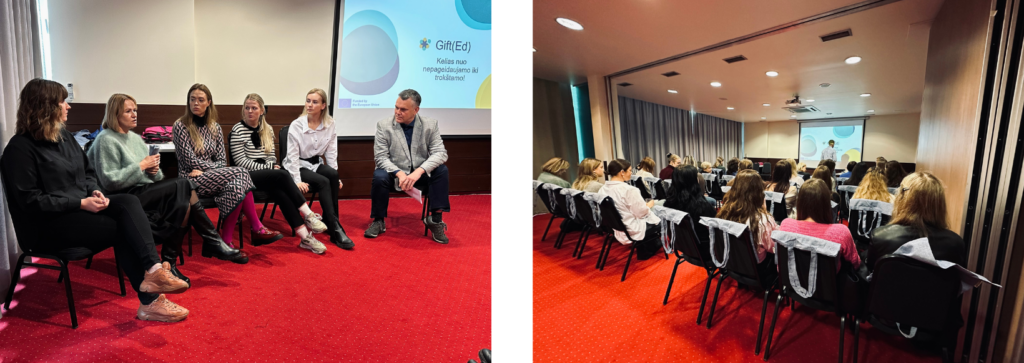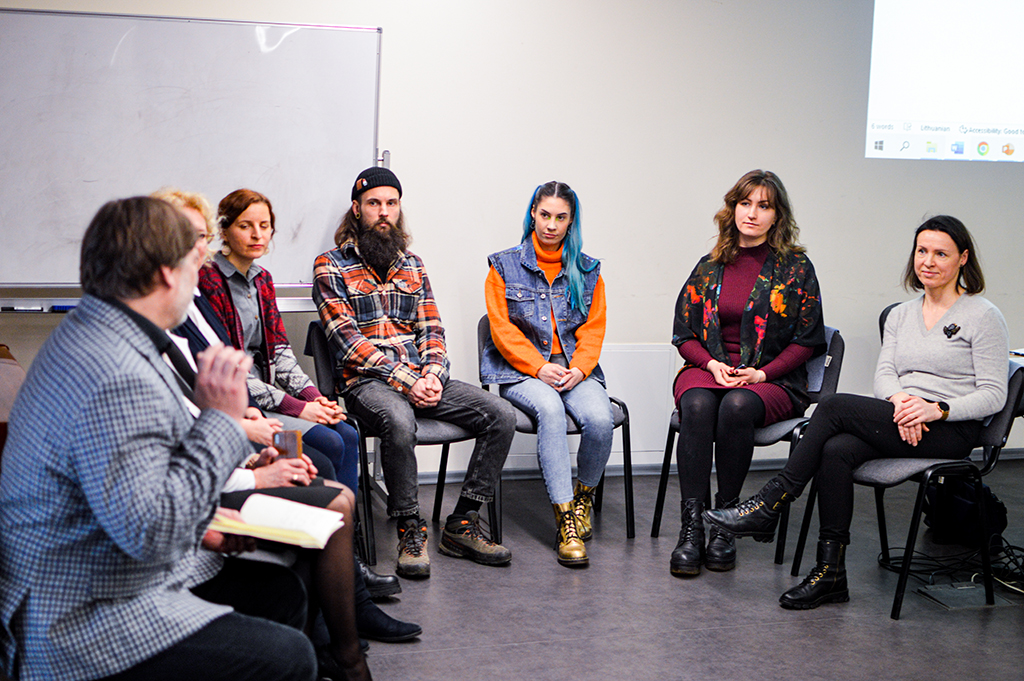Why and how we are going to teach children about Upcycling

Here at Gift(Ed), many of us are parents. And we believe it is essential to instill in our children a sense of responsibility towards the environment and teach them the importance of sustainable living. One of the ways we can achieve this is by introducing them to the concept of upcycling. By actively engaging in upcycling and recycling ourselves, we not only set a positive example but also provide our children with invaluable lessons that will shape their perspective on consumption and waste.
When raising a child, it becomes apparent just how many resources are required to meet their needs. From clothing and toys to art materials and everyday items, the demands can seem endless. However, many of these resources can be repurposed through upcycling, reducing waste and teaching our children the value of reuse and creativity. By involving our children in these upcycling projects, we not only nurture their imagination but also instill in them a sense of responsibility towards the environment.
Parents should actively participate in a waste-less economy, leading by example and showcasing the value of things. It is important for children to witness their parents engaging in sustainable practices such as upcycling and recycling. When children see their parents transforming old items into something new and useful, it sparks their curiosity and encourages them to follow suit. By involving them in the process, we enable them to develop critical thinking skills and an appreciation for the potential in what others may consider as waste.
Moreover, it is essential for older children to understand the impact of their consumption choices on the environment. Taking them on visits to factories where everyday items like jackets and toys are produced can be an eye-opening experience. Witnessing firsthand the amount of work and energy resources required to manufacture a single item can help children appreciate the value of what they already possess and encourage them to make conscious decisions when it comes to purchasing new items. Educational videos that showcase the environmental impact of excessive consumption can also be a powerful tool in shaping their understanding of the world.
By embracing upcycling and reducing our consumption, we can also teach our children the importance of using resources wisely. When we use less today, we save money for the things we truly need or genuinely desire. This financial aspect can be an effective way to demonstrate the tangible benefits of sustainable living. By prioritizing our spending and consciously choosing what we bring into our lives, we not only minimize waste but also set an example of mindful consumption for our children.
So how do you get your child interested in upcycling?
- Start with Simple Projects: Begin by introducing your children to upcycling through simple and fun projects. For example, you can transform old t-shirts into reusable tote bags or create unique artwork using recycled materials. Or sew a skirt for a beloved doll. Or use rags to make bathroom rug. Starting small helps them understand the concept and builds their enthusiasm for upcycling.
- Involve Them in the Process: Engage your children in the entire upcycling process, from brainstorming ideas to gathering materials and executing the project. By involving them from start to finish, they develop a sense of ownership and pride in their creations. This hands-on experience also encourages their creativity and problem-solving skills.
- Teach Resourcefulness: Encourage your children to think creatively and find new purposes for items that might otherwise be discarded. Show them how to repurpose old jars as storage containers or use cardboard boxes to create a homemade dollhouse. Have a separate box for paper and textile scraps, that later can be converted into a fun collage or other art form. By teaching resourcefulness, you foster a mindset of finding value in what others may consider as waste.
- Explore Nature-Inspired Upcycling: Nature provides an abundance of materials that can be upcycled. Take your children on a nature walk and collect fallen leaves, pinecones, or branches. Back at home, use these natural treasures to create crafts like leaf-printed cards or handmade bird feeders. This not only connects them with the environment but also reinforces the idea of repurposing and appreciating natural resources.
- Lead by Example: Children learn best through observation, so make upcycling a part of your own lifestyle. Show them how you upcycle items around the house, such as repurposing cereal boxes for organizing socks or creating new outfits from old clothes. When they see you actively participating in upcycling, they will naturally adopt the practice and understand its value.
Remember, the key to introducing upcycling to children is to make it enjoyable, engaging, and a part of their everyday lives. By nurturing their creativity, resourcefulness, and environmental consciousness, you are empowering them to become stewards of a more sustainable future.
Teaching our children about upcycling is a crucial step towards shaping the quality of life for future generations. By actively engaging in upcycling and recycling ourselves, we demonstrate the importance of sustainable practices and provide valuable lessons for our children. Through upcycling, children learn the value of reusing resources, developing their creativity, and understanding the environmental impact of their choices. By leading by example, introducing them to the waste-less economy, and showcasing the significance of using resources wisely, we empower our children to make informed decisions that will contribute to a more sustainable future.





Responses